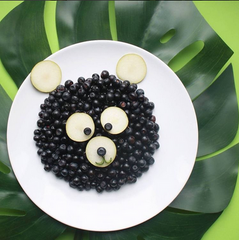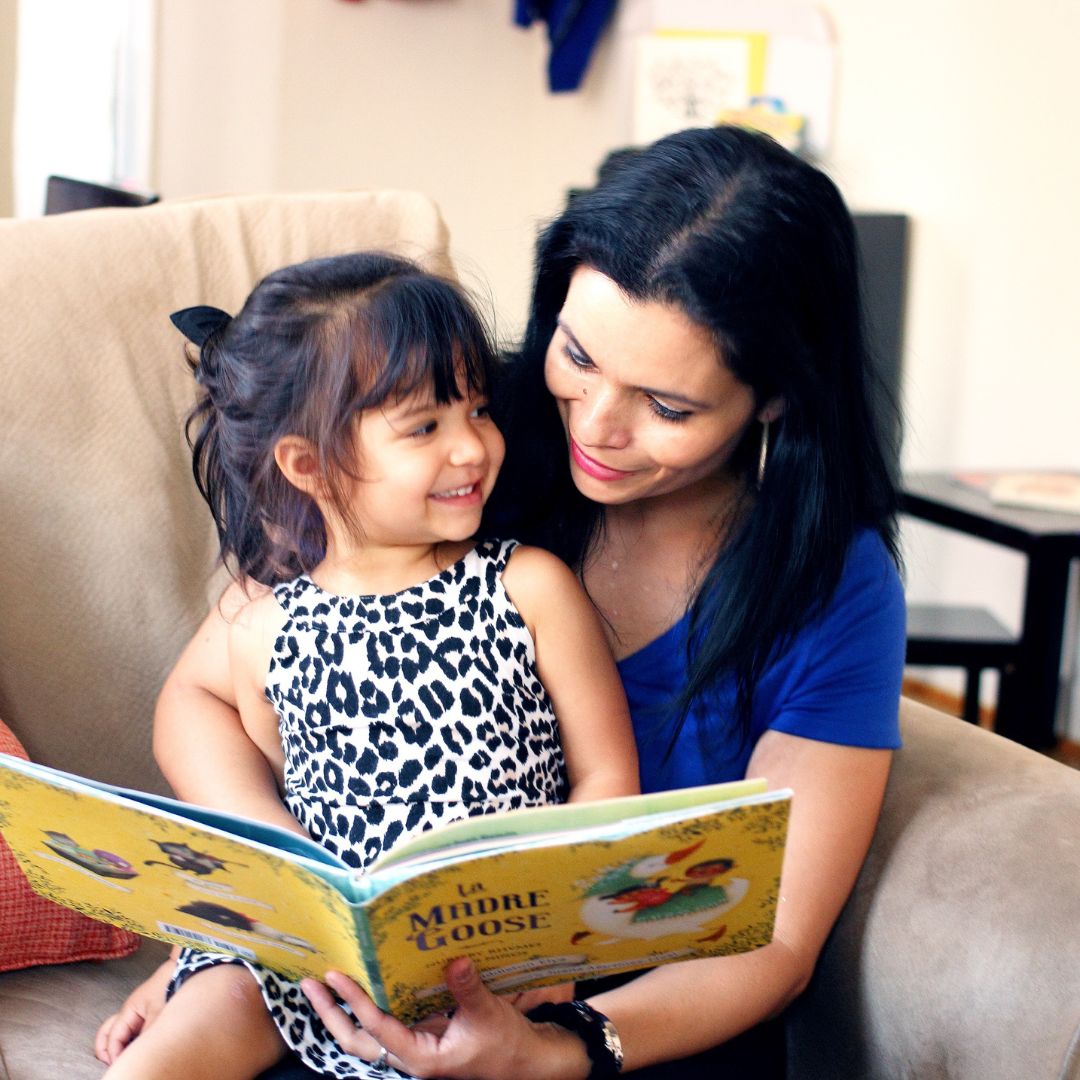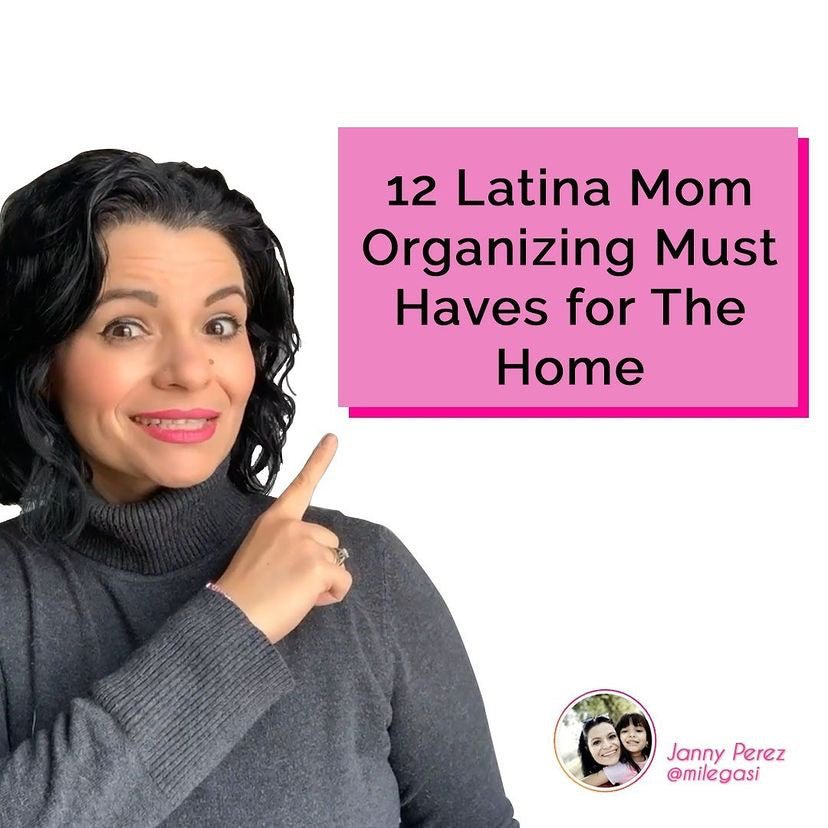
I think we're so hard on ourselves, especially as mamás, and we have so much pressure as women to be everything AND on top of that to look good (sorry dad's it's true). To me it matters more that my family is healthy and that we feel strong no matter what size. So if we're really good 10.5 out of 12 months, so what if we indulge a little during our holiday traditions? Teaching our family that balance and moderation is good in everything in life is a good thing. So what do we practice on those 10.5 months?

For everyday living we still keep the Latino flavors, but I want to offer my 2 year old healthier alternatives that have less sodium (salt), less sugar, healthy fats, more nourishing grains, and ingredients that I can pronounce.
Did you know that according to the Center for Disease control and Prevention, in the Latino population Heart Disease is a leading cause of death, more than 20% of the Latino population over 20 have Hypertension, and more than 40% of the Latino population are obese, not just "con unas libritas de mas." (a few extra pounds). Our children will grow up to be adults one day. Let's start them on the right path so they don't become a statistic. Like these:
https://www.cdc.gov/nchs/fastats/hispanic-health.htm
https://www.cdc.gov/nchs/fastats/mexican-health.htm
So how can we keep our sabores AND be healthy?
1. Read ALL the food labels. I recently attended the Latino Food Festival in the NYC area, the largest food expo for the wholesale market. While some companies are starting to embrace healthier options and ingredients, it will be a while before they catch on the healthy wagon. So this means that you have to do your part by reading the food labels.


But do you know what you are even reading? What to look out for!
- Serving Size: Trust me it's not the whole bag! Look at how many servings come in a bag, jar, box, etc. Sometimes it's ridiculous like 100 Calories for a tiny bag of whatever and you think oh that's not bad, EXCEPT that tiny bag has 5 servings. BOOM! 500 calories.
- Calories and Calories from fat: For preschoolers, the average daily caloric intake is between 1,000-1,400 according to experts. Calories go hand in hand with serving size. Generally foods that are 40 Calories are considered low,100 Calories moderate, and 400 Calories or more is high. If an item has 200 calories and 100 comes from fat it means that half of your calories come just from Fat alone.
-
Trans Fat:According tohttp://familywellnesshq.com/decoding-ingredients-on-processed-food-labels/
These are artificial fats that make oil more soluble increasing the product’s shelf life and can be found in breakfast cereals, granola bars, health/weight loss protein bars, crackers, cookies, popcorn, etc. Even if the label clearly claims "Trans Fat: 0 g" if you see any of the below words on the ingredient list then it contains some trans fat per serving:
- Shortening
- Partially Hydrogenated Vegetable Oils
- Hydrogenated Vegetable Oils
-
Sodium: Salt. Toddler's should limit their sodium intake to 1,500 milligrams Per Day but it is VERY easy to surpass. According to Dina Rose, PhD, a sociologist, parent educator, feeding expert and author:
- The top six sources of sodium in the average child’s diet might surprise you. They are :
- Pizza
- Bread and rolls
- Cold cuts and cured meats
- Savory snacks
- Sandwiches
- Cheese
- Sugars. Preschoolers with a daily caloric intake of 1,200 to 1,400 calories shouldn't consume any more than 170 calories, or about 4 teaspoons (20g per day), of added sugar a day. Look for hidden sugars in foods like these:

-
Artificial and Chemical Sweetners (hidden sugars):
High Fructose Corn Syrup, Corn Syrup, Acesulfame K, Neotame, Aspartame, Saccharin, Sucralose
-
Artificial colors and synthetic dyes:
These are petroleum-based dyes and can be listed as:
FD&C Blue #1 (Brilliant Blue), FD&C Blue #2 (Indigo Carmine), Citrus Red #2, Green #3 (Fast Green), Orange B, Red #3 (Erythrosine), Red #40 (Allura Red), Yellow #5 (Tartrazine) , Yellow #6 (Sunset Yellow)
-
Artificial Preservatives:
Butylated Hydroxyanisole (BHA) and Butylated Hydroxytoluene (BHT), Diacetyl, MSG (aka Monosodium Glutamate, Monopotassium Glutamate, Sodium Hydrogen Glutamate, Glutamic acid, Glutamate, Hydrolyzed Vegetable Protein) – commonly used by restaurants and fast food places as flavor enhancer and for the addictive effect it has on the human body, Potassium Bromate, Potassium Sorbate, Sodium Benzoate, Benzoic Acid, Sodium Nitrate, Sodium Nitrite, Sulfites (Sulfur dioxide, sodium bisulfite), Vanillin, Ethyl Vanillin – Vanilla substitute
For detailed information on effects these can have on the body visit: http://familywellnesshq.com/decoding-ingredients-on-processed-food-labels/
That was alot of information! Y Ahora Que? (Now what?)
2. Substitute. Pick more whole foods and seasonings that limit all that extra stuff that's not healthy for you and definitely not healthy for your child. So if your favorite Sazón's more "plain English" ingredients are garlic, onion, and turmeric find a similar substitute. You may pay a little more but you will sleep better knowing that your child is not eating unhealthy foods and ingredients or better yet, CREATE your own!


3. Get Creative and add more Veggies! I LOVE nachos, but I know that they can come loaded with fat and sodium. So I get creative, make my own, and my 2yr old loves them! I buy these spinach and kale chips http://www.thebetterchip.com/ 
Add protein (beans, chicken, or fish), Load it with veggies like spinach, tomatoes, colorful peppers, avocado, and top it with low sodium cheese (most delis have low sodium meats and cheeses) and voilá!






























Leave a comment (all fields required)